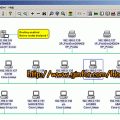The Truth About Response Time
In our continuing effort to provide up-to-the-minute information to consumers, our editors wish to shed light on the multitude of numbers (or specifications) that accompany advertisements, brochures, user manuals, etc. regarding LCD monitors. Amid the cacophony of digits large and small appears one expression that is particularly important, but often overlooked. This mysterious number represents image response time and is articulated in terms milliseconds (ms), such as 12ms, 16ms, 24ms and so on. Response time is the screen’s signal reaction speed, or the time it takes for a liquid crystal panel to go from total white to total black and then back again. A 16ms LCD monitor corresponds to 63 images per second, while 12ms is equivalent to 83 images a second.
What Does this All Mean?
Bottom line -quicker response times translate to smoother and more fluid images. So, the next time you notice an advertisement shouting to the world that a specific LCD monitor boasts a lightning quick 24ms response time – which is actually a fairly nice standard – remember that a product that sports a 12ms response provides a major upgrade in image smoothness and fluidity.
In Case You’re Curious – What About the Science?
Broadly speaking, the response times of LCDs are slower than those of CRTs. In the past, the response time of most LCDs was between 20ms and 50ms, and the adverse effects of this relatively long interval could be noticed during playback of DVDs or when playing games that required especially quick scene changes. You would, for example, find that fast-moving objects would cause ghosting, particularly when black objects passed through a bright-colored background. The human eye will perceive a series of sequential images displayed at a frequency of 30Hz (30 images, or frames, per second) as continuous, as is the case with movies (24 frames per second). Screen images displayed at 60Hz will offer even more comfortable viewing, but careful scrutiny will reveal a slight sense of “flickering”, as is the case with the NTSC television standard (which displays at 60 frames per second). According to standards set by VESA (Video Electronics Standards Association), the frequency necessary to achieve flicker-free display with a CRT is 72Hz. Most VGA cards and software applications, in order to accommodate the use of CRT monitors, have working frequencies set at 75Hz. In the past, the LCD monitors with 16ms response time that predominated in the market supported frequencies only up to 63Hz (1/0.016), making their display performance inferior to that of CRT monitors. Avid gamers therefore continued to use CRT monitors.




